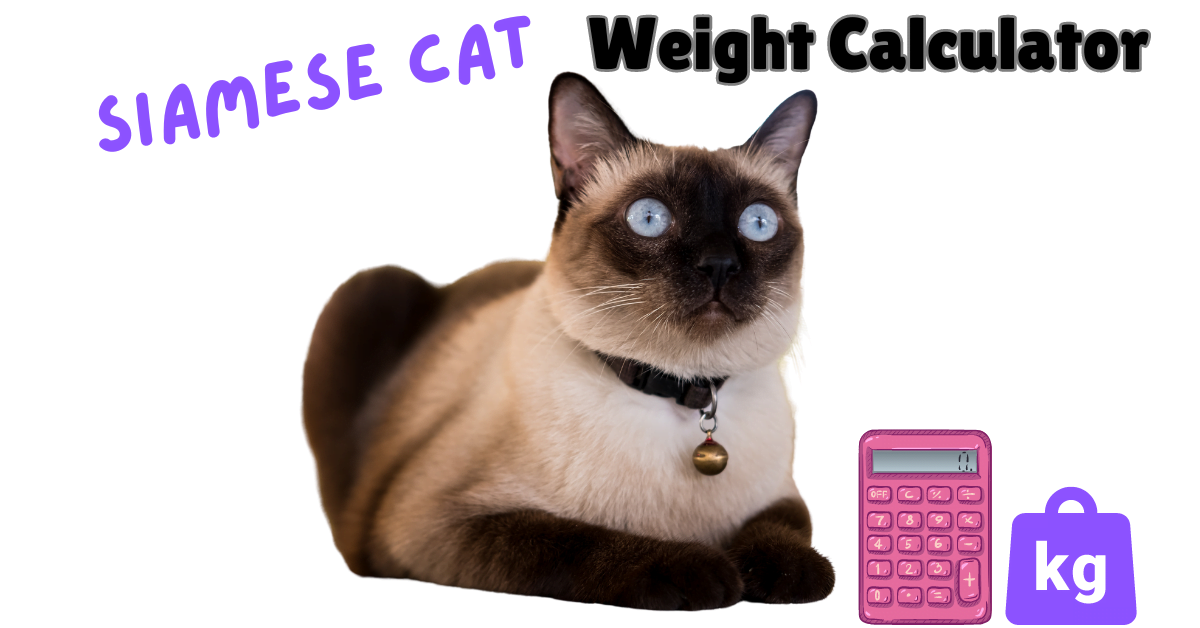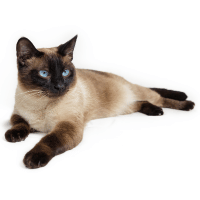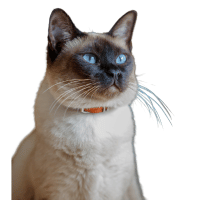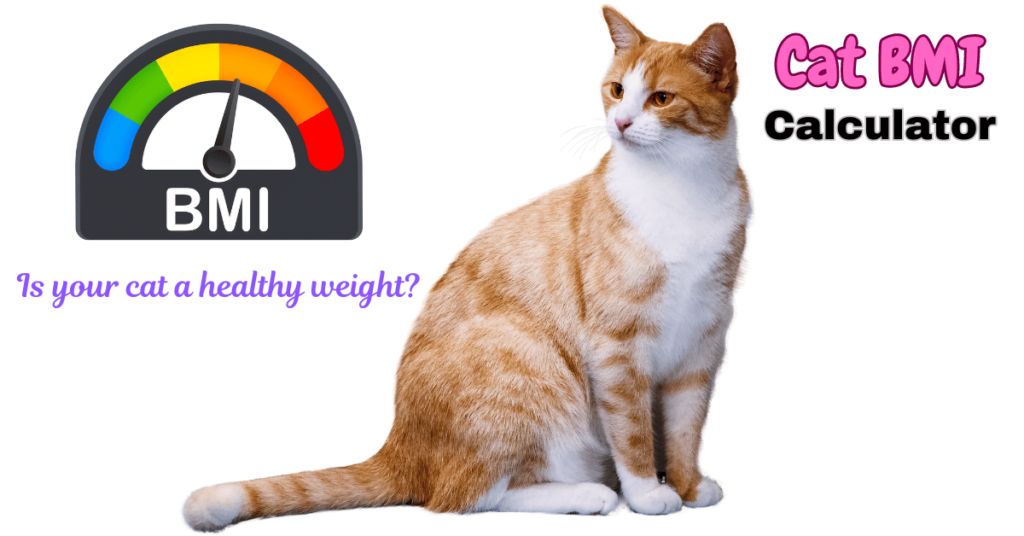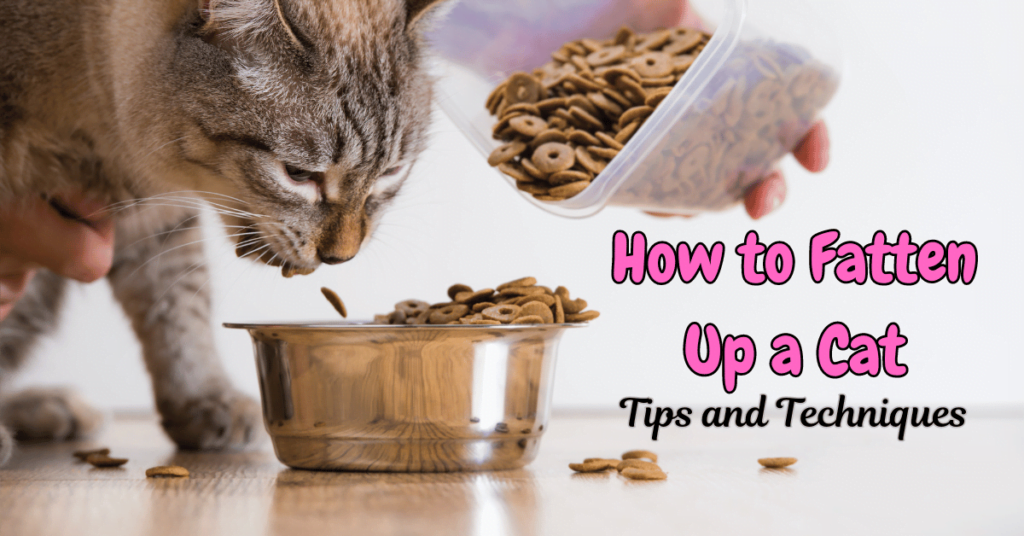Using the Siamese Cat Weight Calculator
- Select Unit: Click either the “Lbs” or “Kgs” button.
- Select Sex: Choose the sex of your Siamese cat from the dropdown menu.
- Enter Age: Fill in the age of your cat in weeks, months, and/or years.
- Calculate Weight: Press the “Calculate” button.
- View Results: See the estimated weight and an image representing the cat’s life stage.
Siamese Cat Weight Calculator
Siamese Cat Growth Guide
Understanding Growth Phases
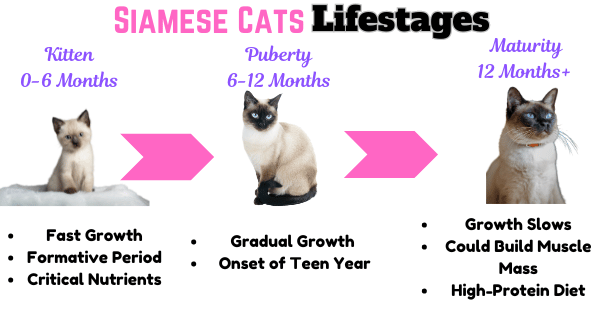
Siamese cats, renowned for their striking features and playful personalities, experience several distinct growth phases from kittenhood to adulthood. The journey begins with the kitten phase, where Siamese kittens grow rapidly in their first six months, a period crucial for their weight gain and overall development. This rapid growth is vital as kittens establish the foundation for their physical and behavioral traits.
During these initial six months, often referred to as their most formative period, kittens typically gain about 1 pound per month—though Siamese may gain slightly less. As they approach six months, these little dynamos begin reaching puberty, marking the onset of their 'teen years.' This adolescent phase continues until they are about one year old.
From six months to about twelve months, the growth rate becomes more gradual but still significant. The first year of a Siamese cat's life is quite pivotal, equivalent to around 15 human years, setting a rapid pace for early development.
What's Normal?
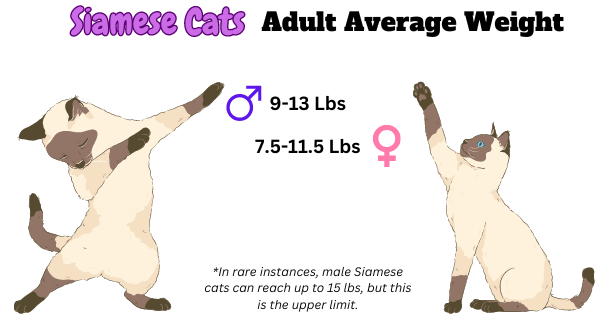
As they mature, the weight gain should stabilize, and by the end of their first year, Siamese cats will have reached a significant milestone in their growth. The norm for adult Siamese cats typically ranges between 8 to 12 pounds. It’s crucial for cat owners to regularly monitor the growth curve to ensure that their Siamese is on the right track. Consulting with a veterinarian is advisable if there are any deviations from these norms.
The second year of life for a Siamese cat is akin to about nine human years, bringing significant changes. During this time, active Siamese cats on a high-protein diet may continue to gain up to a kilogram (approximately 2.2 pounds) of muscle.
From the age of three onwards, each feline year is roughly equivalent to four human years. By this stage, weight should remain fairly consistent, barring any health issues or dietary changes. Regular monitoring and adjustments to their diet and exercise regimen are essential to maintain optimal health.
Alternative Methods to Measure a Healthy Cat Weight
Body Condition Score (BCS)
The Body Condition Score is a practical method used by veterinarians to determine if a cat is underweight, overweight, or at an ideal weight. This technique involves visually assessing the cat’s physique and palpating its ribs and spine. A score is then assigned on a scale typically ranging from 1 (emaciated) to 9 (obese), with 4-5 being ideal.
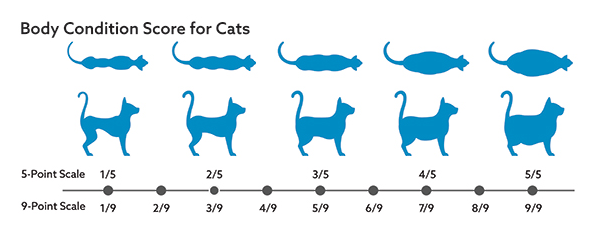
Cat BMI
Unlike the human Body Mass Index which factors in height and weight, the BMI for cats is calculated using ribcage circumference and the length of the lower back leg.
This method provides a more tailored assessment of a cat's body composition, taking into account their unique physiological structure. By measuring the ribcage circumference and comparing it with the length of the lower back leg, this metric helps determine whether a Siamese cat is underweight, overweight, or at an optimal weight.
Tech Gadgets and Tools
For the tech-savvy pet owner, a wide array of gadgets and apps are on hand to significantly enhance the way you monitor your Siamese cat's health. These innovative tools are designed to track crucial health metrics and identify potential issues before they become serious concerns.
Tip: For instance, numerous smart gadgets like smart litter boxes are available that monitor your cat’s litter habits, allowing for early detection of potential health issues.
Managing Your Siamese Cat’s Weight
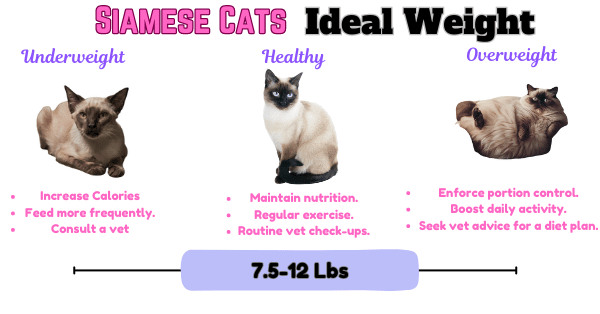
Solutions for Underweight Siamese Cats
- High-Energy Play: Siamese cats thrive on stimulation, so encourage light to moderate play to boost their appetite. Short, engaging play sessions with toys like feathers or interactive lasers can help stimulate their desire to eat.
- Nutrient-Dense Diet: Consult with your veterinarian to find a high-calorie, nutrient-rich diet suitable for your Siamese cat. Foods formulated for growth, recovery, or kitten stages can offer higher calories and essential nutrients that underweight cats need.
- Frequent, Small Meals: Instead of two large meals, offer smaller, more frequent meals throughout the day. This can help boost their overall calorie intake without overwhelming their digestive system.
- Supplements: Consider incorporating vet-recommended supplements to ensure your cat receives all necessary vitamins and minerals to support healthy weight gain.
- Ensure Easy Access to Food and Water: Make sure that food and water are easily accessible, especially if your cat is older or has mobility issues. Placing multiple food and water stations around your home can encourage them to eat and drink more often.
- Check for Underlying Health Issues: Often, being underweight can be a symptom of underlying health issues. Regular veterinary check-ups are crucial to diagnose and treat any medical conditions that may be affecting your cat’s ability to gain weight.
- Comfortable Eating Environment: Create a stress-free eating environment by placing food bowls in quiet, low-traffic areas of your home. Reducing stress around meal times can help your cat feel more relaxed and willing to eat.
Maintaining a Healthy Weight for Your Siamese Cat
- Regular Activity: Continue with daily interactive play sessions to keep your Siamese cat physically active and mentally stimulated.
- Balanced Diet: Stick with a well-balanced diet that's appropriate for their life stage and activity level. Ensure you're feeding the right amount by following your vet's recommendations.
- Consistent Feeding Routine: Keep to a fixed feeding schedule to help regulate their appetite and digestion. Measure food portions accurately to maintain consistent caloric intake.
- Monitor Weight Changes: Regularly check your cat’s weight to catch any deviations early. A stable weight is often an indicator of good health.
- Routine Veterinary Care: Maintain regular veterinary visits for wellness checks. These are crucial for monitoring health and adjusting dietary needs as your cat ages.
Effective Weight Loss Strategies for Siamese Cats
- Interactive Play: Siamese cats are naturally curious, making them perfect candidates for interactive toys that stimulate both their mind and body. Engage your cat in up to 10 minutes of intense play every two hours to help them burn extra calories.
- Cat Wheel for Solo Play: Invest in a cat wheel to cater to your Siamese’s high energy levels. This allows them to engage in solo play anytime they feel the urge.
- Diet Adjustment: Review your cat's diet with your veterinarian to ensure it's nutritionally balanced yet calorie-controlled. Switch to a weight management formula if recommended, which can help reduce calorie intake while still satisfying your cat’s hunger.
- Scheduled Feeding: Instead of free feeding, switch to scheduled meal times. This helps control the amount of food they consume each day and can prevent overeating.
- Portion Control: Use a measuring cup to serve the exact amount of food recommended for weight loss by your vet.
- Increase Water Intake: Encourage your Siamese cat to drink more water. Increasing water intake can aid in digestion and help them feel fuller, potentially reducing the urge to overeat.
- Regular Vet Check-ups: Regularly consult with your veterinarian to monitor your cat's health and adjust the weight loss plan as necessary. This might include tweaking their diet or changing their exercise routine.
- Limit Treats: Cut back on treats or switch to low-calorie options. Treats should not make up more than 10% of your cat’s daily caloric intake.
Pro Tip: Aiming for a weight loss of 1-2% of your cat’s current body weight per week hits the sweet spot. For instance, if your Siamese tips the scales at 15 lbs, a weekly drop of about 3-4 ounces is ideal.
Factors Influencing Siamese Cat Weight and Growth
Understanding the various elements that affect your Siamese cat's growth and weight can help you better manage their health and ensure they lead a long, joyful life. Here's a breakdown of the key factors:
- Genetics: Just as a family tree might influence human traits, the genes passed down from a Siamese cat’s parents significantly shape their body size and weight. A Siamese from smaller-sized parents will likely sport a slimmer physique, affecting their overall heft.
- Sex: In the world of Siamese cats, males typically tip the scales with more heft.
- Age: Siamese kittens are akin to tiny, furry rockets — quick to shoot up in weight in their first year! Post-kittenhood, weight should stabilize.
- Activity Level: Siamese cats need their playtime. Without enough exercise, they could become couch potatoes, which might lead to obesity.
- Neutering: Post-neutering, a Siamese might find their inner foodie, thanks to a slower metabolism and a bigger appetite. Monitoring their diet post-surgery is crucial to prevent unwanted weight gain.
- Diet: A diet heavy in grains, sugars, and carbohydrates isn't just a human concern! For Siamese cats, these can lead to weight issues.
- Medical Issues: Conditions like hyperthyroidism or Cushing’s disease can send a Siamese’s weight upward due to increased appetite and a slower metabolic rate.
Optimize Your Siamese Cat's Health with Our Weight Calculator
Maintaining the ideal weight for your Siamese cat doesn't have to be a guessing game. By leveraging our Siamese Cat Weight Calculator, you're equipped with a precise tool to monitor your furry friend’s growth and ensure they remain within a healthy weight range throughout their life stages.
With our guide on growth phases, alternative health metrics like the Body Condition Score and Cat BMI, and tips on diet and exercise, you have everything you need to keep your Siamese looking and feeling their best.
Consistency is key in health monitoring, so use our calculator regularly and combine this with the right diet, adequate exercise, and professional veterinary care to address any concerns.
Meet Sean, a fintech whiz with a penchant for pet purrs and blockchain buzz. After a decade of fintech feats, Sean's tech talents leaped from ledger lines to litter lines, driven by a passion for pets and a vision for a more connected pet care community. With three critter companions as co-pilots, Sean launched this blog to share a treasury of pet-friendly tech tips and tales.

